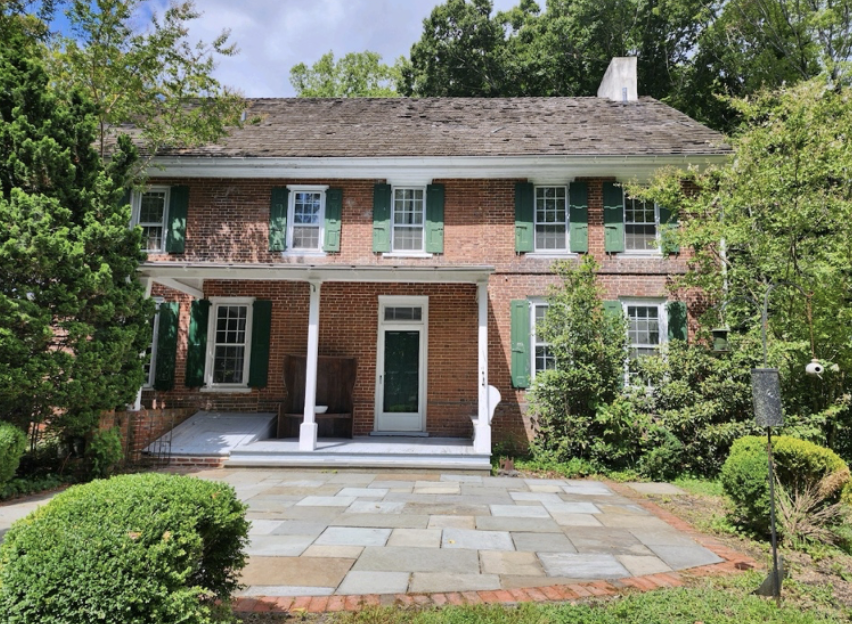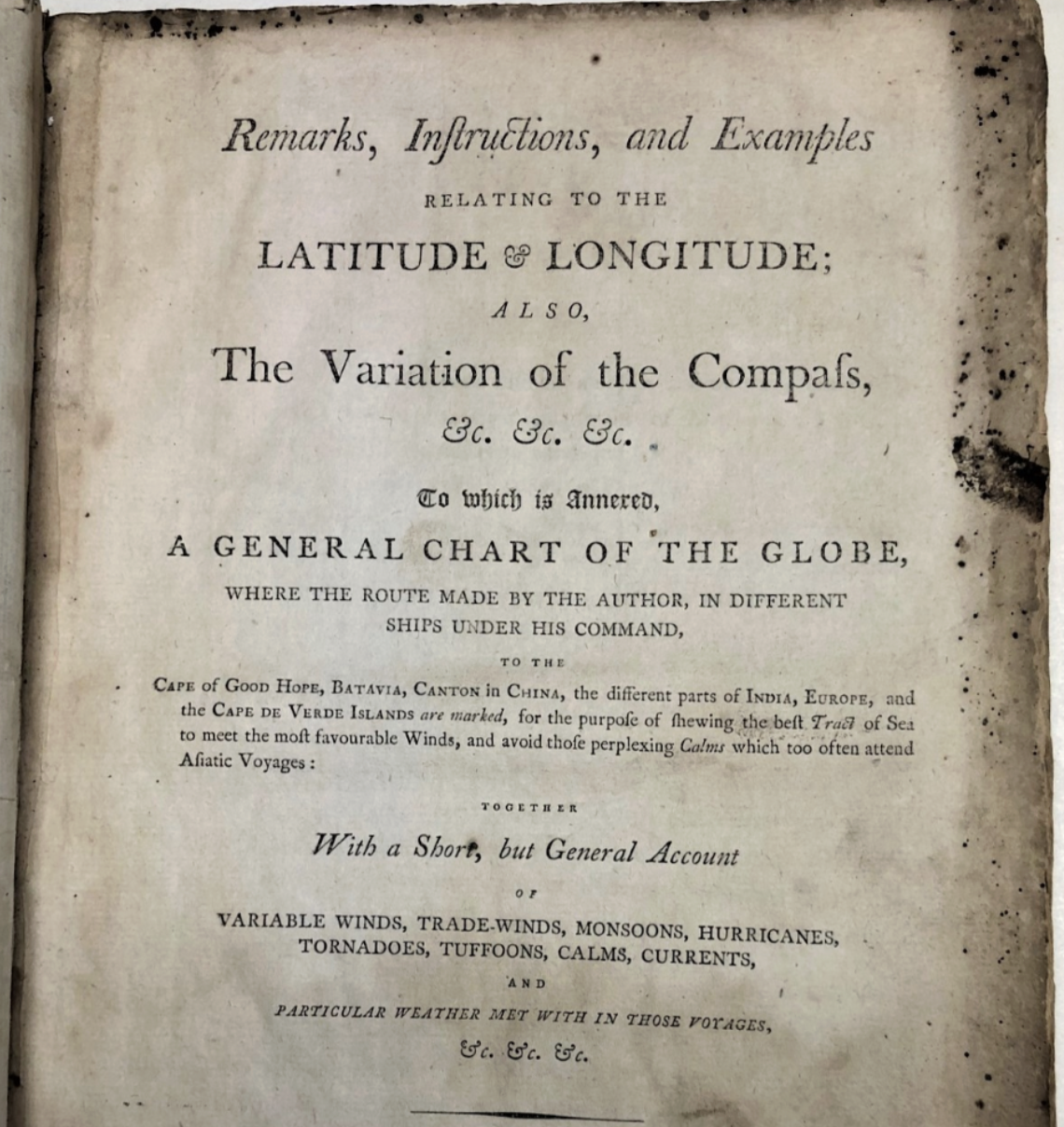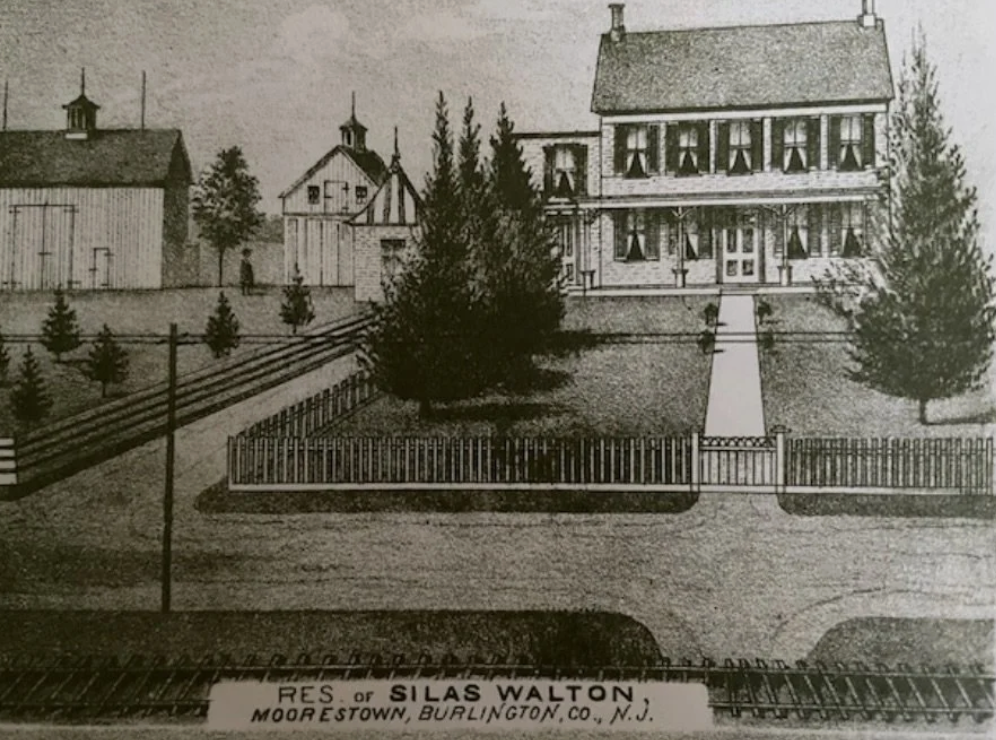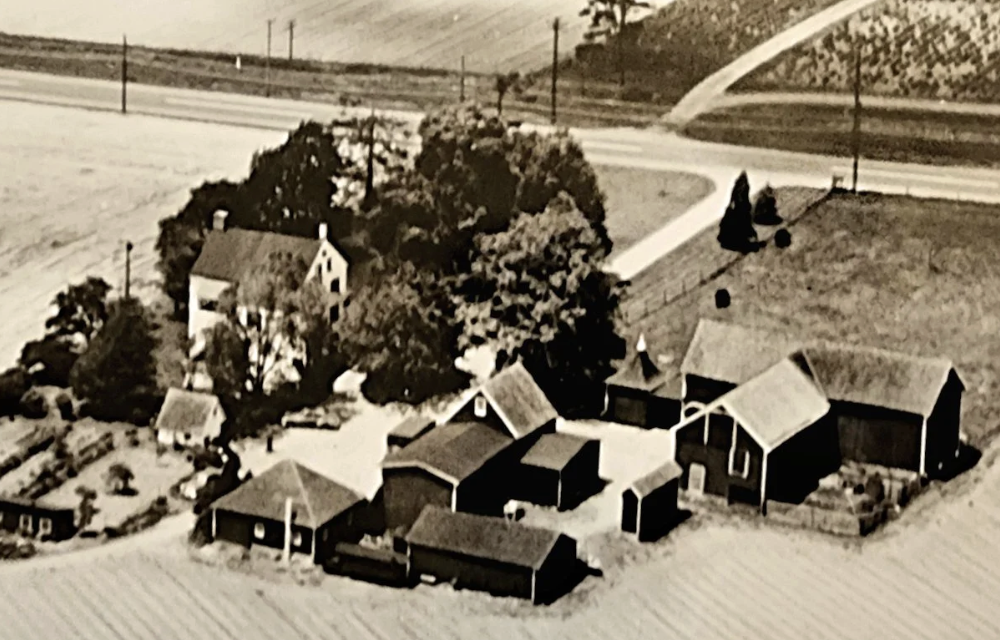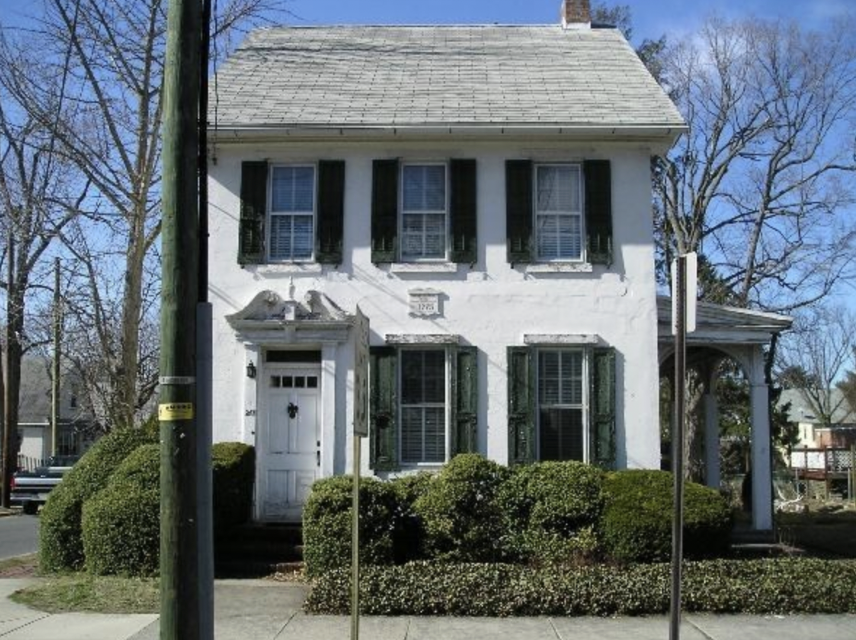French-Hollinshead House
512 Camden Avenue, Moorestown, NJ
This house is individually listed on the State and National Registers of Historic Places and is believed to incorporate the oldest house still standing in Moorestown.
It was once the centerpiece of a large 300 acre farm, lately known as “Forest Brook”. The house was constructed in three sections - the oldest part of which was built c. 1695 by Thomas French, Jr. This section is encompassed in the southwest corner of the building, according to the National Register nomination form for the house. Some original interior features survive to this day.
During the Revolutionary War years, the French property was occupied and raided by both British and Continental troops. Recorded damage claims reveal that Continental troops appropriated wood rails, hay, and grain in February 1777. In June 1778, British troops, retreating from Philadelphia, made off with 72 pounds, 18 shillings worth of goods.
Claim by Edward French for damages incurred from British raid in June 1778
Thomas French, Jr. was locally prominent in Moorestown in the early 18th century. He served in several church and township offices and was elected as a county freeholder. He was the first tax collector of the township, being appointed in 1693, and again, by the Governor, in 1701. He held the same office in 1723. In 1699, he was overseer of highways. In 1705, he was chosen to be constable, in 1707 - overseer of the poor, and served as freeholder 1713-14, 1720, and 1725-1728.
1819 signature of Edward’s youngest son, Charles H. French, on east facing window of the house
During the Revolutionary War period, the farm belonged to Thomas’ grandson, Edward “Neddy” French. Edward was also very involved in town and county government, serving as overseer of highways in 1773, chosen freeholder in 1784, and from 1788 through 1793. He was a member of the township committee in 1786 and from 1788 to 1794. He was also a longtime justice of the peace; and between 1795 (when the marriage license law was passed) and 1801, he married sixty-four couples.
The property remained in the French family until 1837. For a time in the 19th Century, a girl’s school was conducted here. The farm was acquired by Elwood Hollinshead and became known as Forest Brook in 1858. The Hollinshead family started subdividing their substantial acreage for development in 1914, while the home remained in the family until 1965.
Elwood Hollinshead
French-Hollinshead House, south elevation today
Commodore Truxtun/ Bispham/Walton House
Wednesday, September 25, 2024
10:00 AM - 6:00 PM
730 Marne Highway, Moorestown
The oldest portion of this historic farm house was built c. 1770 by Joshua Bispham. The residents of the house would have been witness to Hessian troops on June 20, 1778, marching up the Old Salem Road towards Mt. Holly to meet up with the rest of the British Army. Between the years 1812 and 1816, the house was owned by Commodore Thomas Truxtun, one of the US Navy’s most important early heroes.
During his retirement, the Truxtun family moved to Chester Township from Cranbury, NJ, in 1812. He moved to this 40-acre plantation he called Woodlawn, on what is now Marne Highway. His wife did not enjoy living in Cranbury, and the previous owner of this house, Dr. George Davis, wanted to move closer to family in Brunswick so they simply traded properties. The Truxtun family lived here until 1816, when he moved to Philadelphia. Tax records from 1812 show that Truxtun owned 40 acres of land, 3 horses, and 3 head of cattle. He described the property, which he intended to continue farming as previous owners had, as “handsome, healthy, and in a good neighbourhood.”
As a privateer commander during the American Revolution, he captured ten enemy ships. After the war he continued to sail in service of the nation he fought to create. He was one of six commanders appointed by George Washington to the new US Navy. In 1785 he was responsible for the safe return of Benjamin Franklin to the USA from his tour as Ambassador to France.
US Mint bronze medal, from 1800
In 1786 his ship, the Canton, was one of the first American vessels to open direct trade between China and the United States. In 1794, he published an important book on navigation, Remarks, Instructions, and Examples Relating to the Latitude and Longitude, and was one of the first to map the Gulf Stream.
Commodore Truxtun’s 1794 navigational book
He also designed the original Navy signal manual and wrote the predecessor to the Navy Regulations in use today. As commander of the USS Constellation in 1799 he defeated the French ship L’Insurgente in the Caribbean as part of the “Quasi War” with France. In 1800, he forced the surrender of another French warship, La Vengeance. Six naval ships have been named for him in recent decades, including the current USS Truxtun (DDG-103), a destroyer. He had a reputation for bravery and tenacity as a disciplined but fair commander and a superior seaman and leader.
Commodore Truxtun’s ship, the Independence, 1777, capturing a West Indiaman ship
Silas Walton was another notable owner of the plantation in the later 19th century. In addition to farming his sizable acreage, he also invented a cultivator/tiller and developed a new variety of strawberry. The house remained in the Walton family until 1983.
Drawing of the house from the 1876
J.D. Scott Atlas of Burlington County
20th century aerial view of the homestead
One of many outbuildings
Stairs and railing from 2nd to 3rd floor
2nd floor fireplace with King of Prussia marble
Outbuilding used as garage
Finial detail on garage roof
Dollhouse replica of 730 Marne Highway,
created for Walton children in the 20th century
730 Marne Highway, present day
Richard Flemming House
Wednesday, September 25, 2024
10:00 AM - 6:00 PM
243 West Main Street, Moorestown
The house at 243 West Main Street is a contributing property in the Moorestown Historic District listed on the National and State Historic Registers. It was built by Richard Flemming, c. 1775. Richard Flemming appears as a house holder on the list of Chester Township tax ratables in 1774, owing 8 shillings and 6 pence.
Flemming House, present day
Flemming moved away around 1777, according to an article in the Pennsylvania Packet:
“— The Pennsylvania Packet , September 2d, 1777…
To be SOLD by PUBLIC VENUE, on Thursday, the 18th of September instant, on the premises, a Commodious dwelling-house, and near 5 acres of ground, in Moore’s-town, Burlington County, New Jersey, within 10 miles of Philadelphia ; there are a good bearing orchard, a pump of extraordinary good water, a good hay-house and stable-room for 3 or 4 horses; the house has two good cellars under it, a lean to and a kitchen; there are two rooms on a floor both below and above stairs, and a good shop adjoining that would suit almost any tradesman. It will be sold for cash, and an indisputable title will be given to the purchaser by Richard Flemming.”
In 1801, the home was sold by Thomas Bispham, tanner, to William McElroy, turner and Windsor chair-maker. McElroy was and is a noted New Jersey chair-maker. Many of his well-constructed chairs survive to this day and are sought after by collectors of early American furniture. A stamped McElroy chair is on display at the Smith-Cadbury Mansion.
19th century McElroy chair
Historical marker
Ephraim Haines House
Wednesday, September 25, 2024
10:00 AM - 6:00 PM
201 East Main Street, Moorestown
The house at 201 East Main Street is a contributing property in the Moorestown Historic District listed on the National and New Jersey State Historic Registers.
The oldest portion of this Late Federal, stuccoed brick house was built c. 1760 by Ephraim Haines.
201 East Main Street
On June 20, 1778, British and Hessian troops encamped on his land. In his claim for damages, the items plundered or destroyed included 2750 cedar rails, 1550 oak rails, 55 oak posts, 102 apple trees, 22 sheep, 1 horse 15 years old, 1 horse 5 years old, 2 sows with pig, 11 hogs, 20 acres of grass for mowing, 3 acres of Indian corn, 5 acres of oats and flax, 3 ploughs, 35 acres of wheat and rye and 7000 feet of good pine boards. Totalling a financial loss by his reckoning of 240 pounds, 6 shillings.
Inventory of damages, claimed by Ephraim Haines, June 1778
Haines was a prominent and prosperous local citizen, owning a large portion of the land east of Chester Ave. He was an overseer of highways in 1764. The 1774 tax records for Burlington County show that he owned 278 acres, with 16 cattle and horses. He sold some of that land on the south side of Main Street for a new Friends Meeting House and school in 1781. Ephraim’s son Samuel W. Haines inherited the house and made additions and renovations to the house in the mid 1820s. Samuel was a tax collector in 1817-1818 and Sheriff of Burlington County from 1813-1816 and 1819-1822.
Foyer at 201 East Main Street
201 East Main, present day
Joshua Bispham House
Wednesday, September 25, 2024
10:00 AM - 6:00 PM
141 East Main StreetMoorestown, NJ, 08057 United States (map)
141 East Main Street, Moorestown
The house at 141 East Main Street is a contributing property in the Moorestown Historic District, and it is listed on the National and New Jersey State Registers.
141 East Main Street, on right, 1890
Built in the 18th century by Joshua Bispham, this house, like the one next door, was a witness and is said to have been a reluctant host to Hessian soldiers in June of 1778 when the British were evacuating from Philadelphia.
“The Capture of the Hessians at Trenton” by John Trumbull
Sometimes referred to as “the tannery,” oral tradition has it that the building was constructed as a tannery downstairs with quarters upstairs. The walls of the house consisted of two layers of bricks with straw and mud between them for insulation and plaster over the bricks. The house has been added onto and remodeled many times over its long life.
Continue reading for more details…
When Bispham and his first wife were coming to America from England, their daughter was born on the ship during the five month journey. The ship’s captain named the child Atlantica and presented her with silk for a dress. Bispham was Town Clerk and one of the assessors of the township during the years 1744-47, a NJ Assemblyman in 1749 and a Chosen Freeholder in 1753.
Joshua Bispham House, 1998
According to George DeCou, talking about the Hessian House next door in Moorestown and Her Neighbors, he wrote, “Old residents recall when these two buildings were connected by a one story building but I do not know when this addition was added. Some old records refer to the two properties as the barracks which was probably because the buildings were occupied by the British troops in 1778.”
On the 1876 J.D. Scott Map of Moorestown, 139 and 141 appear to be connected
Under the ownership of Asa Schooley, a harness and saddle shop occupied the space between the two houses.





